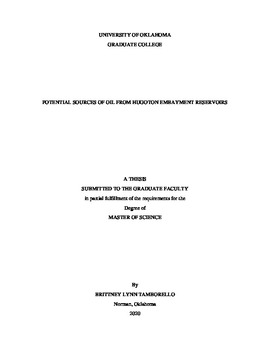| dc.description.abstract | Oil has been produced in the Hugoton Embayment in western Kansas since the early 1900s, but the primary source rock for these oils has not definitively been determined. Thirty-two oils from the Middle Pennsylvanian to the Ordovician and three Middle-Pennsylvanian shales are compared to conventional Woodford sourced oils in the Anadarko Basin as well as to local Chattanooga (Woodford) Shale core in Kansas. The oil and core samples were characterized using various geochemical techniques to understand the variations in source rock lithology, organic matter, depositional environment, thermal maturity, and secondary migration. Instruments used in the characterization of oils and source rock extracts include gas chromatography (GC), gas chromatography-mass spectrometry (GCMS), bulk isotope analysis, and Rock-Eval pyrolysis. Several biomarker families were investigated, including steranes, terpanes, and aryl isoprenoids. Diamondoids, C7 compounds, and various aromatic compounds, while not true biomarkers, have also been studied for use as diagenetic derivatives.
It has been proposed previously that the majority of oils produced in the Hugoton Embayment originated from the Early Mississippian-Late Devonian Woodford Shale in the Anadarko Basin and underwent long distance migration into the reservoirs of the Hugoton Embayment. The geochemical characteristics of the oils from these reservoirs are relatively consistent throughout the Hugoton Embayment – both laterally and vertically – and are very similar to those found in Woodford derived oils from the Anadarko Basin in Oklahoma which supports the concept of long distance migration that was proposed by Burrus and Hatch in 1989.
Using oil/oil and oil/source rock correlation techniques, data from this work has shown that the source of oils from the Hugoton Embayment has been determined to be the Woodford Shale. Knowing this, the variability of fill patterns into the Hugoton Embayment may be better understood, and the risk of overestimating hydrocarbon accumulations in these reservoirs may be prevented. | en_US |
